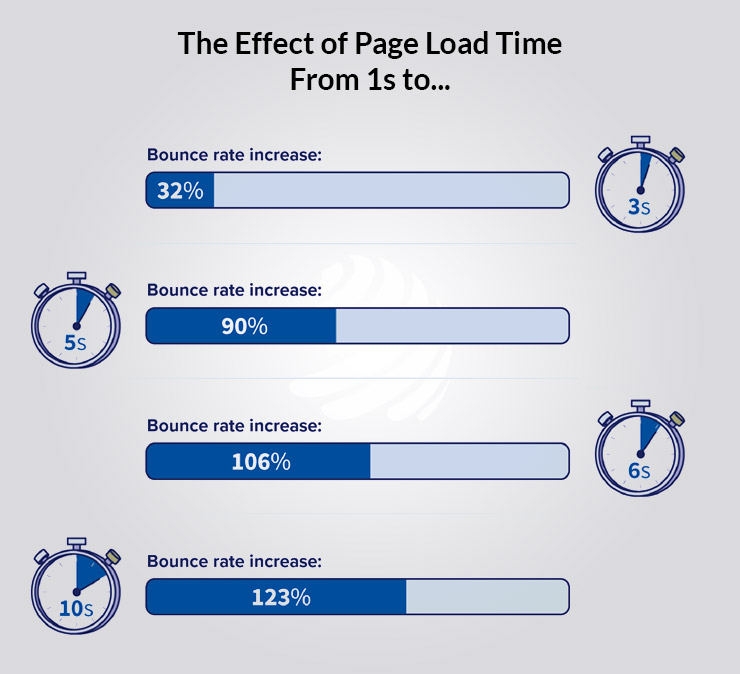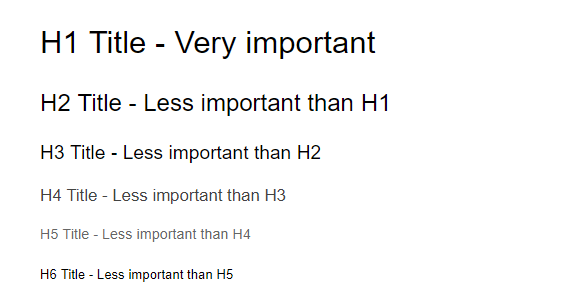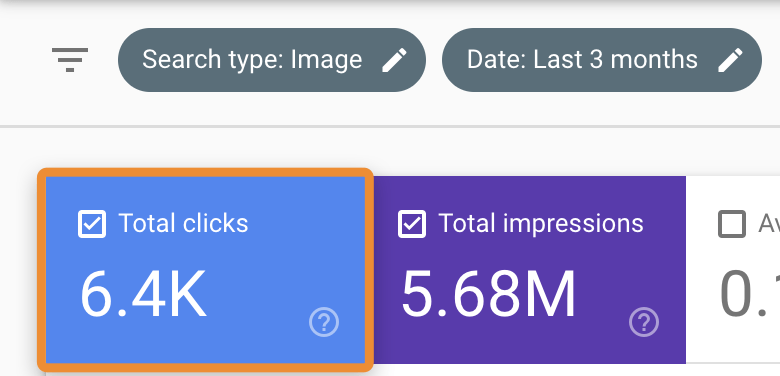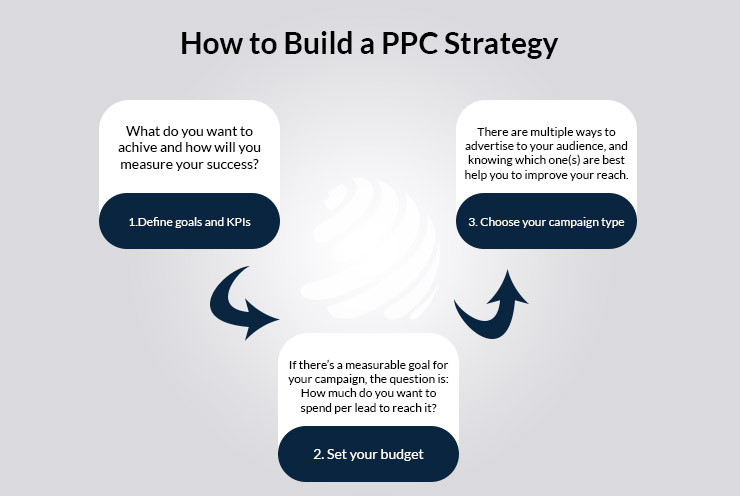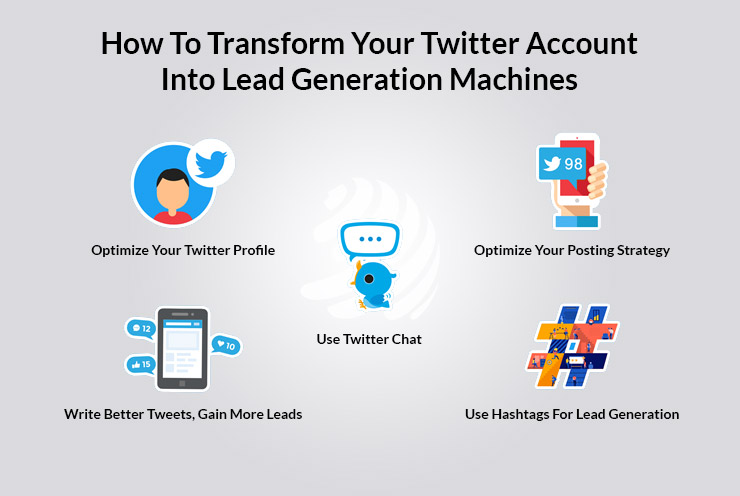Every SEO expert and digital marketer wants the same thing – get their website to rank higher on Google search results.
In today’s world of digital marketing, where websites and brands battle for attention, securing a top spot on Google’s search results has become the ultimate triumph.
With countless businesses and content creators vying for visibility, knowing how to get higher ranking on Google search results has become an indispensable skill.
But fear not, for in this article, we will unravel the secrets to soaring above the competition and capturing the attention of eager searchers.
From optimizing your website for quality ranking factors (QRF) to crafting compelling content, we will equip you with the strategies you need in order to conquer the search engine battlefield.
So, tighten your virtual armor, and let’s embark on a journey together to the top of the search engine result pages on Google.
But before we do that, let’s find out what key ranking factors you should keep an eye on if you want to rank higher on Google search results:
Quality Ranking Factors (QRFs)
If you want to rank higher on Google search results, you need to know all the key ranking factors that determine a page or website’s ranking in the search engine result pages. Knowing which search metrics ranking factors to target can help you use the right kind of techniques according to your niche and content format.
We have compiled some of the most important Google organic ranking factors so you can target them when working on your search engine optimization strategy:
-
Website Security
The security of your website is now a significant Google organic search ranking criterion, along with its architecture. Making sure that your website is using the HTTPS protocol, which encrypts the data sent between it and a user’s browser, is one of the most important criteria to rank well.
Google acknowledged HTTPS as a search engine ranking indicator in 2014. So make sure that your website has an SSL certificate and is still utilizing http://… in its URL.
-
H1 Keywords
The H1 heading represents the topic of your content. Therefore, add your primary keyword to your H1 tag. The use of the same phrase in both your H1 and meta title, according to some SEO experts, is a sign of keyword stuffing.
Therefore, try to add a little flavor to it while still making sure your keyword is there. Combine this with all other on-page optimization techniques (metadata, URL, meta description, and other headings).
-
Core Web Vitals
Search metrics ranking factors rarely vary, despite the fact that SEO trends come and go. However, as part of the page experience improvement in 2021, Google did create a new ranking element called Core Web Vitals. Core Web Vitals measures the experience an individual has on your page, which impacts if and how they interact with it.
They consist of:
- The length of time it takes for a page’s visible parts to load, or LCP (Largest Contentful Paint).
- The amount of time it takes for the first click on your website to be registered or FID (First Input Delay).
- If there are any jarring popups or unexpected motions, or CLS (Cumulative Layout Shift).
By using lazy loading, code minification, picture compression, and other techniques, you can raise your Core Web Vitals.
-
The Length of Your Content
When it comes to search engine optimization, there is some disagreement over content length. Some people think the ideal length should be 2000 words or more. That shouldn’t be the case all the time, though. Although it appears that long-form content receives the most backlinks, it’s important to just publish long-form content when it’s necessary to cover the complete topic.
It’s also a good idea to look at what your rivals are doing because that can be a sign of high-quality content. You won’t likely rank highly for a keyword if all of your rivals have between 2000 and 4000 words and you only have 200 words.
-
Page Loading Speed (Via HTML)
Core web vitals were revealed as a ranking factor by Google, as we have mentioned above. PageSpeed includes core web vitals, and it has an impact on user experience.
If your website is difficult to use or load slowly, Google is more likely to penalize you, especially if the websites of your competitors load quickly and contain high-quality content.
-
The Number of Backlinks
Backlinks are links to your website that come from other websites. A page with a lot of links pointing back at it signals to Google that it is very valuable and comes from a trustworthy source. However, a single link from a high-quality website is far superior to many connections from multiple domains with low authority.
-
Internal Linking
Linking to your own content helps connect pages for Google and your readers, increasing the worth of each page. A link from an authoritative page to another page on your website aids in site navigation and lends credibility to both pages.
This raises the second page’s position in the search engine results. Build a strong network of internal links as you add new content to your website so that your web pages can support one another.
Descriptive anchor text is another important part of a good internal link building strategy. The text you provide after a link in your content should explain where the link is leading!
-
User Experience (RankBrain)
Google works to make its search results helpful and user-friendly. As a result, it gives pages with good user experiences high rankings.
However, how does it identify them?
Does it solicit feedback from users?
The search engine takes into account variables like dwell time, click-through rate, and bounce rate. All of these indicate whether or not your website is appealing to visitors and user-friendly:
- The proportion of users who click through to visit your website after seeing an entry in search results is known as the Click Through Rate, AKA CTR.
- The percentage of visitors who click on your page only to rapidly return to the search results is called the Bounce Rate.
- The length of time visitors remain on your website after arriving on it is called the Dwell Time.
Google will assume that your website is unrelated to their demands if visitors arrive, don’t like it, and leave. If enough users carry out this action, it might become more challenging for your website to rank higher in the search engine result pages.
Keep visitors on your page as long as you can while offering them a simple customer experience, so they can complete their purchases. This will inform Google that your page is trustworthy and help you rank higher on google search results.
-
Mobile Usability
Users are increasingly visiting websites using their phones, and user experience is crucial for SEO performance. Because of this, if Google detects that your site is not responsive, it continuously notifies you in the Search Console. Work on your mobile usability if you want to win favor with Google and, more crucially, your users.
-
Domain Authority
In 2023, the reputation of your domain is still thought to be among the most crucial Google organic ranking factors. Moz’s ranking score, called Domain Authority (DA), is used to determine how highly a website is likely to appear in the Search Engine Result Pages.
Domain authority is a number that can range from 0 to 100, with 100 being the greatest outcome and signifying the value and reliability of your page. In general, your domain’s DA will increase with age and the number of high-quality backlinks it has.
By obtaining high-quality backlinks to your website and flooding it with engaging original content, you can rank higher on Google search results.
How to Get Higher Ranking on Google Search Results?
If you want to improve your online visibility and reach a wider audience, achieving a higher ranking on Google search engine result pages is essential.
With millions of websites competing for attention, it’s crucial to understand the key factors that can help you know how to rank #1 on Google.
Source: Google
We have compiled some of the best tips for rank higher on Google search. These strategies can help you optimize your website and climb the SERPs ladder, as well as retain your position once you have climbed to the top.
By implementing these tips (and following the search metrics ranking factors explained above), you can significantly improve your chances of making a prominent appearance in Google’s search results and ultimately drive more organic traffic to your website:
-
Create More Long-Form Content
By producing more long-form material, you can rank higher on Google search results. Long-form information allows you to go deeper into the subject at hand, which increases its value and informatics. Due to the more involvement, your dwell time will increase, and this will help your website rank higher.
In addition, individuals enjoy sharing lengthy information. According to a research study done by BuzzSumo, long-form content receives more social shares. The most shared articles were those between 3,000 and 10,000 words, followed by those between 2,000 and 3,000 words. Increased visibility and traffic from social media will lead to more social shares, which is essential for propelling your website to the top of Google.
-
Debug Your Web Pages
You must have Google crawl your website for your web pages to show up in Search Engine Result Pages. When performing content optimization, redirects, or content pruning, it’s common for Google to take some time to scan the site after it goes live.
Although you can occasionally ask for a faster crawl, it often takes a few days for new content to get live.
Debugging your pages will help you to ensure that you deliver the high-quality content you know is on your website and rank higher on Google search results.
Moreover, you can use tools such as AMP report, Search Console, Fetch as Google, and Robots.txt Tester.
-
Optimize Your Content for Featured Snippets
Every SERP is not built the same.
Therefore, you should not treat all SERPs in the same way if you want to rank higher on Google search results.
Search queries such as ‘things to do in Italy’ or ‘how to diy home furniture’ don’t just have one specific answer. Google provides you with its finest recommendations, but every single bit of recommendation will be unique.
Source: Google
Answers to questions like “What time is it in Abu Dhabi right now” and “When is Defense Day this year” are readily available. Abu Dhabi’s time might be displayed at the top of the website without requiring you to click.
Short answers are provided by Google in a variety of formats, including featured snippets, ranking sections, and answer boxes. These are popular formats to target because they frequently stand out from the other listings on the results page.
Here is everything you need to keep in mind (related to optimizing your content for passages) if you want to rank higher on Google search results:
- A concise paragraph can succinctly respond to a straight inquiry.
- For “how to” inquiries, sequential steps are preferable.
- On the SERP, pictures and videos stand out visually.
On top of that, results in Google’s Answer Boxes are more noticeable than the first result on search engine result pages. Your content obtains a lot more visibility and is more likely to generate a lot of hits and traffic if it appears in this section. This motivates you to work harder to rank your website highly in Google search results.
Utilizing question-and-answer formats in your content will help you prepare your website for Google’s Answer Box.
-
Switch to HTTPS
Today’s users desire and demand a secure online environment. Encrypting your website and restricting unauthorized access to user interactions is a smart practice for online communication. And for that reason, you need to use HTTPS to safeguard your website, especially if you want to rank higher on Google search results.
If that’s still not persuading you, consider whether you paid attention when Google declared HTTPS an official ranking indication on August 7, 2014.
Do you want to know why?
Security is a significant priority for Google in addition to quality. They seek to maintain user satisfaction and happiness while also keeping them safe. In any case, although this ranking signal doesn’t carry as much weight as high-quality material does, it is still crucial.
Moreover, HTTPS uses much greater encryption than HTTP. Google urged everyone to use HTTPS because the former can now stop website breaches.
-
Focus on Search Intent
Focus on search intent if you want to rank higher on Google search results.
Google’s ranking of your content takes search intent into account. In essence, it’s what a person is seeking, and each keyword on Google is unique. For instance, listicles are in the top 13+ results when someone searches for the top keyword research tools.
You must comprehend why they would be searching for that keyword in order to rank higher with search intent. What do people hope to accomplish?
Knowing this will make it simpler for you to decide what kind of content to create that will meet their wants and address their issue!
-
Optimize All The Critical Elements on Your Web Pages
You need to take care of the important optimization elements in order to rank higher on Google search results. Make sure that you have the following metrics optimized for search engines like Google:
-
H1 & H2 Titles
The page’s major content should be broken up with the help of the H1 and H2 title text, which should describe it using relevant and contextual keywords.
-
Alt Text
Each and every image (and video) on your website needs to have a title, which should be informative and must contain the target keyword.
-
Page Title
Source: SEO Quake
The page title should appropriately reflect the information on the page using a target keyword. Plus, it should also be under 60 characters.
-
Meta Description
Source: SEO Quake
The meta description, which should contain the target keyword, should be no more than 155 characters. Furthermore, it should give a succinct and convincing summary of the content of the page.
-
Add Your Primary Keyword in Content
The content of the page should include the primary keyword at least once. For the purpose of making the keywords stand out to search engines, use bold text.
While it’s crucial to optimize these components for search engines, it’s also crucial to make sure the information is still accessible and pertinent to human readers. Google frequently encourages us to write for people rather than search engines. Make sure that you naturally include the keywords on the page without overdoing it.
-
Do Image Optimization
Images frequently take up the most visible space on a web page and account for the majority of the data and bytes transferred from the internet. That is why Google suggests getting started with the process of image optimization, which is frequently regarded as both an art and a science.
Additionally, people might lose patience trying to download anything from the internet that simply wouldn’t load and require a lengthy wait. As a result, it all comes down to page speed.
The numerous formats that are out there—such as GIF, PNG, and JPG—call for different optimizations. There are numerous ways to accomplish it.
-
Incorporate Synonyms in Your Content
This one is quite easy. For the greater advantage of having your website found in search engine result pages as a response to queries, Google urges SEO experts to use synonyms while writing and creating content that lives on their pages.
Source: Top Content
Synonyms are different phrases and words with various combinations. Google Search is sophisticated enough to provide results that not only contain the exact word entered into the search field but also content that has the same meaning.
It’s because Google makes a lot of effort to infer the keyword intent and the demands of users. The search engine may offer results for both “general physician” and its synonym “doctor,” for instance, if you type “general physician” and one of its synonyms is “doctor.”
Source: Google
Google aims to comprehend more than just search phrases in general. Because of this, synonyms are highly valued in Google’s eyes. They aid the search engine in better understanding the context of users’ words and, as a result, what they want to learn in answer to their inquiries.
The link between users and Google bots is provided by synonyms.
It has a lot to do with the fact that context has surpassed content in importance. Furthermore, the search has undergone a transformation, becoming more of a topical search than the standard one. The ability to return relevant responses to queries is facilitated by context.
-
Optimize Your Anchor Texts (All of Them)
Another vital step to getting your website rank higher on Google search results is anchor text optimization. Google can better comprehend the purpose of your web page by using the anchor text you use to link to it, which will improve how those pages are listed.
As a result, utilizing relevant and contextual keywords in your anchor text is a great approach to direct search engines and aid in their comprehension of your page’s content.
Speaking of anchor texts, there are five different kinds of anchor texts you need to be aware of:
-
Naked Link
A URL is regarded as a naked link anchor when it serves as an anchor. If you’re trying to link to blog articles, these anchors might not be the greatest choice because they might make reading your blog posts less enjoyable.
-
Generic Anchor Text
A generic term or a phrase that links to other web pages is known as generic anchor text. A few examples of generic anchor text include “read here,” “learn more,” or “click for more.”
Since Google has no method of understanding the linked-to page’s content and its relation to the connecting page, they are not particularly good for search engine optimization.
-
Partial Match Anchor Text
The primary keyword on the web page you’re linking to is included in this kind of anchor text.
For instance, “enterprise link building tactics’‘ linking to an article talking about link building tactics. Since they are still relevant to the subject of the linked-to page (link building), they are also a great replacement for exact match anchor texts.
-
Exact Match Anchor Text
A keyword that closely resembles the page you’re connecting to is used in an exact match anchor text.
An exact match anchor text might be “SEO tactics” linking to another website or article that discusses SEO optimization methods. These are perfect for assisting Google in comprehending the contents of the linked-to website.
-
Branded Anchor Text
This kind of anchor text uses a brand name, as the name implies.
For example, “Globex Outreach” pointing to a Globex Outreach blog. This kind of anchor text may be seen as suspicious and manipulative if it is used excessively.
In your articles, refrain from utilizing it more than once. Over-optimizing your internal linking anchor texts is not necessarily a bad thing (as in, you do not get penalized). This indicates that you are free to use as much exact match anchor text as you like for your internal links.
Despite this, it’s still advisable to utilize synonyms and other variants to keep your articles flowing naturally rather than attempting to force exact match anchor text.
-
Keep an Eye on New Updates to Rank for Google News
A wonderful strategy to rank higher on Google search results as well as get authority links from websites that wish to credit you as a source is to rank on Google News. As a result, your domain authority may gradually increase, which will help you rank better.
Therefore, getting ranked among Google News search results should be taken into consideration if your objective is to have your website appear at the top of Google. Since large news organizations will invariably produce the most news, you can modify your targets to focus on particular trends in your sector.
This may be breaking news, recent updates on a trending subject, or in-depth interviews with those who are most directly affected by the events.
-
Get Your Business Listed on Google My Business
If you really want to know how to rank #1 on Google, you need to use Google My Business service and gain extra visibility for your brand as a result.
When choosing to build a listing in Google My Business, Google claims there are several advantages:
- You get to take control of what people see about you when searching for your business
- You can update your information when necessary
- Also, you can use enticing snapshots of your business and engage online ratings.
- You can also increase your brand’s popularity and loyalty.
Moreover, it’s free. It can easily attract prospects by simply sharing helpful information that is otherwise already on your site but not obvious enough.
Your local SEO plan should include listing your brand on Google My Business since it primarily favors local businesses.
-
Create a Strategic PPC Strategy
An efficient paid advertising strategy (like those done using Google Ads) may not always have a direct impact on your ranking. However, you can immediately increase brand recognition by leveraging its quickness and capability for precise targeting.
Both search and social media feeds can use this. The extra traffic that results from that improved visibility can accumulate over time to improve your website’s ranking. Due to the PPC (pay-per-click) nature of Google adverts, advertisers only get paid when customers click on their adverts.
The impression puts you in front of the same audience that would see a ranked result, but your ad will have a “Sponsored” tag next to the listing to distinguish it from organic results.
You may set your target areas and demographics with Google Ads to be sure that you’re reaching the proper audience.
However, bear in mind that just because you bid on a term doesn’t mean you’ll appear first in the advertisements block. The ranking is ultimately decided by the bid amount, ad relevance, and Quality Score because other advertisers may be bidding on the search term or keyword as well.
-
Provide Google bot Access to Your Code Data
It is 2023!
Things are different now.
Today, as compared to the good old days, there are countless fantastic, rich, and intricate websites that significantly rely on JavaScript. In order for Google to see and display the web page as a user would, it needs access to the website’s CSS, JavaScript, and image files.
This will improve how your content is indexed. Additionally, they claim that by granting this permission, your context will be better searchable, and the pages will be presented more effectively, particularly on the phone.
Using Google’s Fetch as a Google tool will enable Googlebot to crawl your HTML, CSS, JavaScript, and image files.
The interesting thing is that you can view the precise rendering of the web page by Google, which will let you know in advance which indexing mistakes to prevent. Furthermore, you may use Google Search Console to examine and evaluate your robots.txt files.
-
Optimize Your Twitter Profile for Google SERPs
Did you know that SERPs also include tweet indexing?
Optimizing Twitter is one of the best tips for rank higher on Google search. In order to have complete access to the tens of thousands of tweets that are posted online every second, Google once again teamed up with Twitter in 2015.
The majority of people choose the most recent news they can get since they are unsatisfied with information that is more than a few hours old. It goes without saying that you should start optimizing your Twitter profile and your tweets for length and relevant keywords.
As a result, you will be able to serve both your interest in attracting readers and the interest of users in locating the stuff they’re looking for.
-
Use Search-Friendly URLs
The same rules apply to creating URLs as they do when it comes to constructing relevant and suitable title tags and snippets. Your followers can link to you more effectively by creating succinct yet descriptive URLs. Links with a lot of obscure characters, letters, elements, and numbers are chaotic and pointless. Plus, such links won’t help you rank higher on Google search results.
Simply put, user-friendly and SEO-friendly content in the URL will promote more links, improve the structure of your website, and give potential visitors a suitable text to use as their anchor text when giving you a backlink by linking to you.
Additionally, plain text URLs give consumers and Google crawlers more information than a complicated and disorganized parameter would.
-
E-E-A-T (Experience, Expertise, Authoritativeness, and Trustworthiness)
Experience, Expertise, Authoritativeness, and Trustworthiness are abbreviations for E-E-A-T in SEO. Google introduced the extra E, Experience, in the latter half of 2022. Moreover, the search engine also confirmed that E-E-A-T will be graded for each search in 2022. Google’s Quality Raters’ Guidelines go into considerable length about the E-E-A-T idea.
If you want to know what ranks a search higher on Google, you need to pay special attention to E-E-A-T.
Google employs a tool called Search Quality Rater to assess the authority and quality of a webpage. The authority and competence of your content will ultimately help you rank higher on Google search results.
Furthermore, Google will verify that the material is true and dependable. Your audience is constantly looking for new information. Therefore, as a content provider, you should do the same by always posting current information on your website.
-
Add Structured Data Markup
All websites use structured markup data, which is a type of coding, to help Google comprehend the content of their web pages. Your position and page display in search engine results pages can be enhanced by this information. This means that you can rank higher on Google search results.
The primary function of structured markup data is to provide a comprehensive search experience to the visitors and potentially convert them into paying customers.
Additionally, Google Search employs structured data to display rich and intricate results, giving users additional information in visually appealing and streamlined ways.
Structured data, in other words, is a systemized method for providing information about a web page and, as a result, better and more effectively classifying the content found on that page. You persuade Google to rank you higher in SERPs by assisting them in understanding the content of your page.
Data with structured markup is very useful for businesses that want to rank higher on Google search results.
For instance, you might include crucial business information like your physical location, your contact information, your rates or a range of prices, and marketing information like your company’s name, logo, social media accounts, and many other things. More people will see your company’s information in search results, maps, Knowledge Graph cards, etc., and reach out to you. This will help you rank higher on Google search results.
Wrapping It Up
The journey to rank higher on Google search results begins with a solid foundation: your website. It’s essential to optimize your site’s structure for Google organic ranking factors. Moreover, you should ensure that it is user-friendly, lightning-fast, and mobile-responsive.
A seamless user experience not only pleases visitors but also catches the discerning eye of search engine algorithms. Remember, first impressions matter, and a well-optimized website sets the stage for success. As a result, you get to rank higher on Google search results.
But a stunning website alone won’t guarantee top rankings. You must sprinkle it with relevant keywords, those magical phrases that connect search queries with your content. Focus on natural integration that enhances readability and engages both humans and search engines alike.
Lastly, it is important to stay up to date with the latest trends and algorithm changes in order to rank higher on Google search results. Google’s algorithms are notorious for their complexity, and what works today may not work tomorrow. Embrace continuous learning, follow reputable SEO blogs, and be adaptable in your strategies.
Remember, SEO is a marathon, not a sprint. It requires patience, perseverance, and a willingness to adapt to the ever-changing digital landscape and rank higher on Google search results.
So, use these tips and tricks and create captivating content. Remember that you need to be patient to see the results.
Best of luck!







